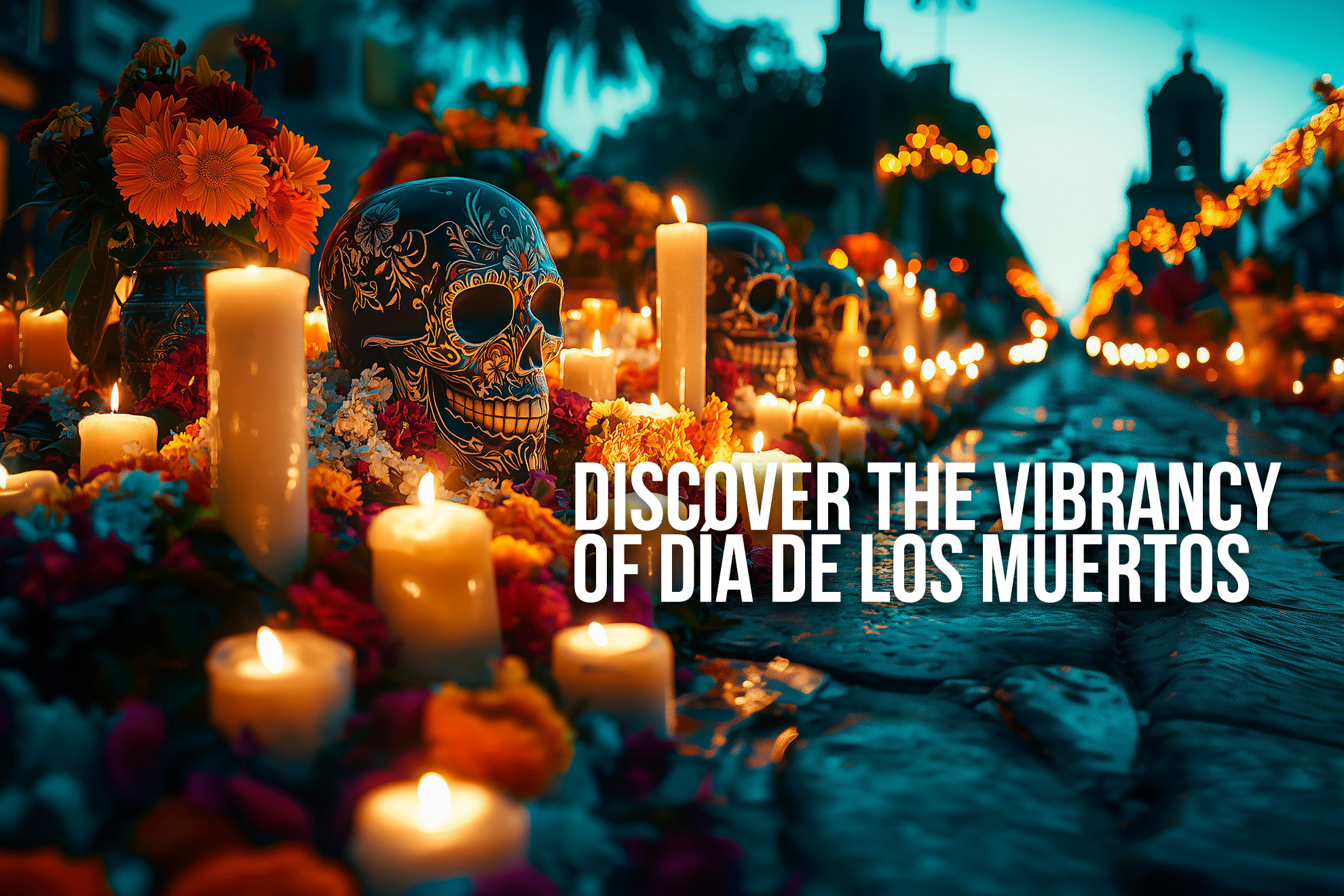Discover the Vibrancy of Día de los Muertos and Its Allure for European Travelers

Discover the Vibrancy of Día de los Muertos and Its Allure for European Travelers
Día de los Muertos, or the Day of the Dead, is one of Mexico's most iconic celebrations, a multi-day homage to the deceased with roots stretching back thousands of years to pre-Hispanic civilizations. Celebrated around the 1st and 2nd of November, this period sees families come together to honor their ancestors through artistic displays, culinary traditions, and deeply symbolic rituals. For European travelers seeking authentic cultural experiences, Día de los Muertos offers a mesmerizing blend of vibrant artistry, rich history, and profound cultural significance.
A Kaleidoscope of Color and Artistry
From the moment European travelers set foot in Mexico during the Día de los Muertos festivities, they are greeted with a stunning explosion of color. Streets and cemeteries are adorned with marigold petals, altars are bedecked with intricate papel picado (cut-paper decorations), and face-painted calaveras (sugar skulls) abound. The unique visual language of Día de los Muertos is characterized by bold hues, from the deep oranges of the marigolds to the vibrant pinks and purples of the decorations.
These artistic elements not only serve to beautify the surroundings but also carry symbolic meanings. Marigolds, known as "cempasúchil" in Nahuatl, are believed to attract souls to the altars with their bright color and strong scent. The iconic sugar skulls, often personalized with the names of deceased loved ones, represent the sweetness of life and the assurance that death is but another stage in the continuum of existence.
For art enthusiasts and culture seekers from Europe, witnessing the craftsmanship and creativity that go into Día de los Muertos decorations offers an inspiring immersion into Mexican traditions. These expressions of remembrance and joy powerfully convey the community's resilience and reverence for life and death.
Historical Depth and Rich Heritage
The origins of Día de los Muertos are deeply woven into Mexico's history. The traditions associated with the celebration have evolved from the rituals of indigenous civilizations, including the Aztecs, Mayans, and Toltecs, who dedicated specific periods of the year to honor the deceased. When the Spanish arrived in the 16th century, Catholic and indigenous beliefs merged, leading to the formation of the modern Día de los Muertos holiday.
This historical layering is evident in the celebrations today, which feature a blend of indigenous and Catholic practices. Altars, or "ofrendas," set up in homes and cemeteries, typically include a mix of indigenous symbols (such as foods the deceased loved) and Catholic iconography (such as crosses and religious images).
European travelers with a keen interest in history and anthropology will find a wealth of stories and meanings embedded in each aspect of Día de los Muertos. The opportunity to learn about these historical intersections provides a compelling narrative that enriches their travel experience.
Deep Cultural Significance and Human Connection
At its core, Día de los Muertos is about remembrance and connection. Families gather to honor the spirits of their loved ones, sharing stories, music, and food. This act of remembering transforms death from a topic of sorrow into one of joyous commemoration. Such a perspective on mortality offers European visitors a chance to reflect and perhaps find a new, comforting viewpoint on death.
Beyond its philosophical underpinnings, the celebration fosters community bonds. Public festivities, including parades and communal outings to cemeteries, bring people together in collective remembrance. This sense of togetherness and shared history is palpable, creating a welcoming atmosphere for visitors.
For European travelers, participating in these communal activities can be profoundly moving. It offers a chance to connect with locals, fostering cross-cultural understanding and empathy. Engaging with Día de los Muertos, European travelers gain not only a deeper appreciation of Mexican culture but also an enriched sense of their shared humanity.
A Captivating Experience for Every Traveler
Métonymie_ understands the transformative potential of cultural tourism. By showcasing the celebrations of Día de los Muertos, we aim to create B2C marketing campaigns that highlight not just the visual and historical aspects of the holiday but also the profound emotional and philosophical experiences it offers.
European travelers who participate in these celebrations come away with more than just memories; they gain a new appreciation for traditions that view death as part of a natural cycle, an opportunity to honor the past, and a celebration of life itself.
At Métonymie_, we strive to capture and convey this essence in our marketing narratives, ensuring that the allure of Día de los Muertos continues to captivate and inspire.
Join us in storytelling that brings life to ancient traditions. Let us guide you through the vibrant, heartfelt celebration of Día de los Muertos in Mexico—a journey sure to leave an indelible mark on your soul.
Keep reading
Related insights, exciting stories and other things worth sharing with the world.



.png)